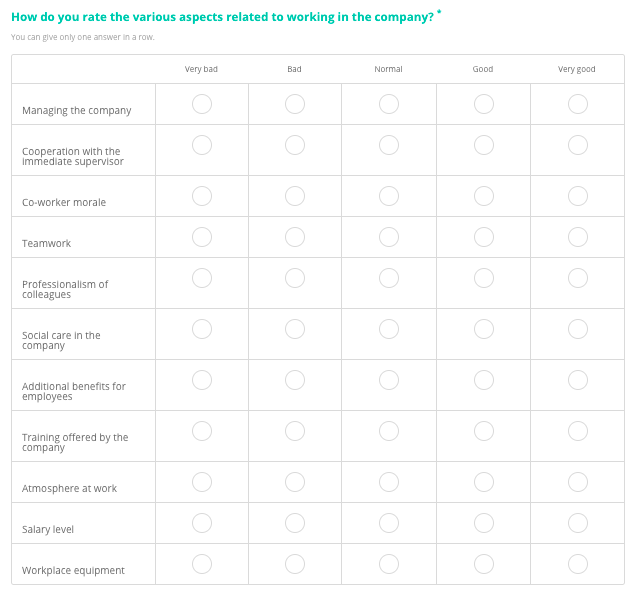Main Page
Welcome to the Encyclopaedia of South African Theatre, Film, Media and Performance (ESAT), the open access, online and Wiki-based, digital reference work on theatre, film, media and performance in South Africa.
This page was last modified on 24 August, 2023
Contents
- 1 Go to the INDEX TO ENTRIES
- 2 Introduction to the ESAT project
- 2.1 The project
- 2.2 Contacting the ESAT editors
- 3.1 Four important notes for everyone using ESAT
- 3.2 Accessing the database of entries
- 3.3 Using the “Search” function
- 3.4 Using the Index
- 3.5 NB: Copyright and referencing of material used
Go to the INDEX TO ENTRIES
To skip the introductory notes and instructions for ESAT, and go directly to the listing of contents, click on the link in the title above:
Introduction to the ESAT project
The project
The ESAT encyclopaedia-project was conceived as an interactive resource for researchers interested in the evolution, history and forms of performance and media in South Africa, and it is based on research originally undertaken by the Centre for South African Theatre Research under the auspices of, and with the support of, the Human Sciences Research Council (HSRC) between 1979 and 1987. In 1988 the research was transferred to, and continued at, the University of Stellenbosch by the Centre for Theatre and Performance Studies, with the support of the University’s Division for Research Development, the former Centre for Science Development (CSD) and the National Research Foundation (NRF). The website was opened for public use in 2011.
Please note that any opinion, finding and conclusion or recommendation expressed in this material is that of the authors and that none of the sponsors of the project accept any liability in this regard.
The project is currently headed by Temple Hauptfleisch (original founder, editor-in-chief and project director of the undertaking), with Freddy Ogterop, Ivor Markman, Karina Hauptfleisch and Christo Snyman as assistant editors, while numerous contributors across the globe have helped in collating and writing the information since its first inception. It uses the standard Wiki programme and is published on the web with the assistance of the Drama Department (http://www.sun.ac.za/drama) and its former Centre for Theatre and Performance Studies, the IT staff of the J.S. Gericke Library and the division for Information Technology at the University of Stellenbosch (http://www.sun.ac.za/index.asp).
For more detailed information on the nature of the project, including the history and aims of the encyclopaedia and the names of all the editors, researchers and supporting staff involved – click on the link below:
Contacting the ESAT editors
You can contact ESAT at the following addresses:
Postal address: The Editor: ESAT, Department of Drama, University of Stellenbosch, Private Bag X1, MATIELAND 7602, South Africa.
E-mail address: satj@sun.ac.za
Fax number: (+ 27) 21 882 9141
How to use ESAT
While ESAT uses the Wiki programme, which makes provision for a very useful search function, the database has avoided contemporary multi-screen web-design, and has been constructed rather more traditionally, like a printed encyclopaedia, with an Index to the various entries (also called The ESAT Entries). The entries in the Index have been grouped in sixteen distinct categories, each one managed and edited by one of the research editors.
Four important notes for everyone using ESAT
- The main focus is on pre-21st-century theatre, film, media and performance
- It is work in progress and thus subject to error on occasion
- Policy regarding offensive language and terminology
- ESAT is not an archival facility
To find out more about these matters, click on the relevant item(s) listed above.
Accessing the database of entries
To access database material on the relevant category, the reader has two options:
Using the “Search” function
Go to the “Search” block at the top right of this page (or type: Alt+F), type in the search word/phrase and click on the search icon there (the magnifying glass) or press the Enter button on your keyboard.
Using the Index
Simply click on The ESAT Entries at the start of this main page (or HERE) , to go to the list of 16 categories into which the material has been divided. On the list provided, click on the appropriate one, then follow instructions on the landing page.
NB: Copyright and referencing of material used
ESAT is an open access publication, which means that even though the material contained in the encyclopaedia is copyrighted to ESAT and the University of Stellenbosch, it may be freely used for academic and artistic purposes as long as such use is clearly referenced and the material used is attributed to The Encyclopaedia of South African Theatre, Film, Media and Performance (ESAT), the reference also including the URL for the particular entry in ESAT.
Contributing to ESAT
All researchers, artists and other interested parties are invited to help us to expand, improve, update and correct ESAT since, by its very nature, the database will always be incomplete and prone to error on occasion.
To find how you can contribute, click on the HEADING above.
Что за программа есат

ESAT examines individual employees, but the result of the research is a collective image of team satisfaction. The scale used must therefore convey a clear message as to whether and to what extent employees are satisfied.
By creating questions (learn how to ask survey questions in the best way) remember about their goal, which is to obtain information on the level of employee satisfaction. For example, the answer to a question may be marked on a scale where 1 means very dissatisfied and 5 means very satisfied. The analysis of the results is then simple – the higher the value, the better the rating, i.e. the greater employee satisfaction. It is also possible to use a 7-point scale (if you want to get more precise data).

You can also replace the typical scale with a question like a slider, an assessment in the form of stars, hearts, or smileys. Prepare the survey to match the company’s image as much as possible and encourage employees to participate in it. You have many possibilities – in our user guide, you will find information about all kinds of questions.
Ask ESAT Questions and Make Your Company Grow
Employee satisfaction research is not complicated, but it requires proper preparation, distribution among employees, and analysis of the results. At Startquestion, we have prepared a tool for you, thanks to which creating an ESAT survey and drawing conclusions from the results of the survey will be even faster and easier.
- We provide access to ready customer satisfaction survey templates (visit section: for the employee), including benefits, incentive system, relations with superiors or the overall level of satisfaction.
- We have prepared guides where it is explained how to analyse the results using advanced features such as, for example, crosstabs, filters, rankings and trends.
- We give you the ability to automatically generate reports that you can present in your HR departments or at meetings of your superiors.
During each stage of the survey, you can also ask our support department which will help in creating a survey and analysing the results, and together with you will create the survey best suited to your needs.
Remember that an Employee Satisfaction Survey (ESAT) may only be the beginning for more advanced research – such as Pulse Survey or Employee Engagement. You can prepare all types of research yourself using Startquestion with substantive support provided on our blog, in the Employee Insights section. Best of luck!

Author: Ula Kamburov-Niepewna
Updated: 06 April 2023
Ula is a Content Manager with extensive experience in journalism and SEO copywriting. She is a specialist in creating content in HR and Marketing research, Customer Experience, and User Experience. She has been associated with Startquestion for five years and currently leads the Content Marketing team there. After work, Ula is an obsessive reader, a huge Harry Potter fan, and a traveler who grabs every opportunity to see a little bit of the world and taste (usually more than a little) good food.
Read more

Recognize Employee Burnout Signs and Learn How to Answer Them
Recognizing the signs of burnout and knowing how to address them is crucial for creating a healthy and positive work environment. Let us show you how to do it with survey software.

How to Measure Brand Awareness: Metrics & Strategies
In a world where customers are bombarded with information and choices, your brand’s awareness can be the guiding light that helps them find you amidst the digital noise.

How to Use Microsurveys for Your Business
Time to unveil the secrets to leveraging microsurveys to fuel business success. Dive into the world of quick, actionable insights that can transform your decision-making process.
Guarantee of quality and safety

This site is protected by reCAPTCHA and the Google Privacy Policy and Terms of Service apply.
Manage cookie
Get Feedback Racino Sadowski Skowronek s.j. as the Personal Data Controller, processes your personal data using cookies to ensure the proper functioning of the website. You can manage your preferences by selecting the appropriate button by clicking “Accept all cookies” or “Decline cookies” or “Manage your cookies”. You can withdraw your consent at any time by changing the selected settings. More information about the use of cookies and the processing of your personal data, including your rights, can be found in our Privacy Policy.
Functional Functional Always active
Storage of or access to technical data is strictly necessary for the legitimate purpose of enabling the use of a specific service expressly requested by the subscriber or user, or for the sole purpose of carrying out the transmission of a message over an electronic communications network.
Preferences Preferences
Storage or technical access is necessary for the legitimate purpose of storing preferences that are not requested by the subscriber or user.
Statistics Statistics
Technical storage or access that is used exclusively for statistical purposes. Technical storage or access that is used solely for anonymous statistical purposes. Without a subpoena, voluntary compliance from the ISP, or additional records from a third party, information stored or retrieved solely for this purpose usually cannot be used to identify you.
Marketing Marketing
Storage or technical access is required to create user profiles for the purpose of sending advertisements or tracking a user on a website or on several websites for similar marketing purposes.
При подготовке материала использовались источники:
https://esat.sun.ac.za/index.php?title=Main_Page
https://www.startquestion.com/blog/esat-measure-satisfaction-of-your-employees/
 Онлайн Радио 24
Онлайн Радио 24